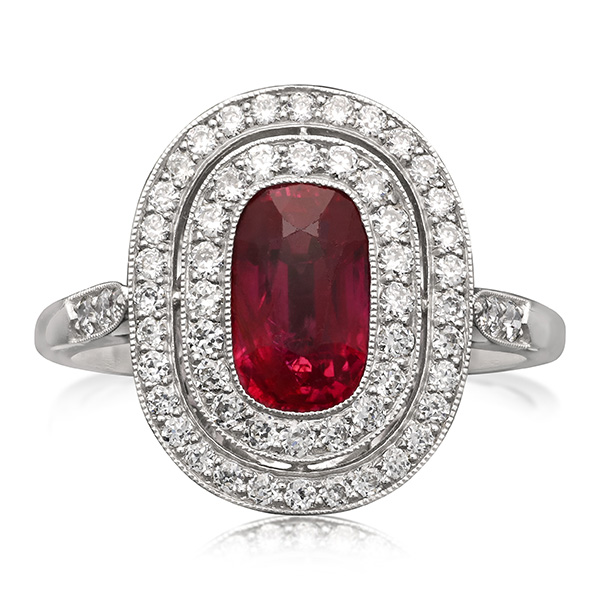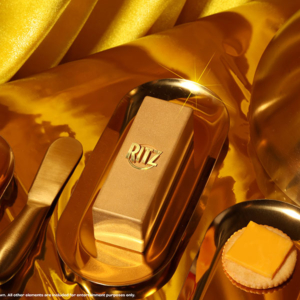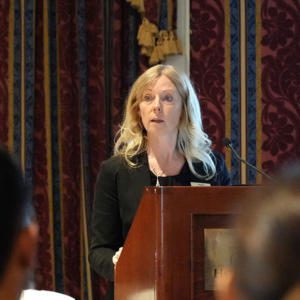
My birthday month of July is a banner time to discuss rubies, and this year I’ve done just that, from uncovering some surprising facts about the gem to this deep-ish dive into the enduring allure of the Burmese variety.
Now I’m wrapping up the month with a single, perfect example: a 2.32 ct. elongated rectangular cushion-shape Burmese ruby set in a ring from the 1920s.
It found its way to me via a dispatch from Hancocks London, in which Guy Burton, the heritage jeweler’s director, prepared a statement on the jewel: “This timeless, feminine, and elegant ring is a beautiful combination of deep vibrant color and wonderfully sparkling diamonds. The setting is kept to a minimum and the millegrain edges help to lighten the appearance, meaning all attention is on the beauty of the gems. The elongated cushion shape is very flattering on the hand, and the flat profile and style of setting make this a practical as well as beautiful ring.”
Hancocks further notes that the color of rubies mined in Burma are considered the ne plus ultra—an exceptionally deep rich red, with scant secondary colors such as brown or pink. JCK’s audience knows well that the Mogok valley in what is now known as Myanmar has been the world’s primary ruby source for centuries. The origins of the mines are swathed in mystery and legend, but, according to the jeweler, what is certain is that references to Burmese rubies have been found dating back to the Shang dynasty in the sixth century. The mines were taken over by the king of Burma in 1597, and all rubies over a certain size had to be given to him on discovery rather than sold.
Today, there are many different mines in the area, both privately owned and government-run.
When Hancocks posted the ring on Instagram, one commenter declared it “stunningly elegant,” and I couldn’t agree more. So I’ll be imagining it on my finger until August, when my thoughts (yours too?) will inevitably shift to peridot and spinel.
Top: Circa 1920s platinum double cluster ring with Burmese ruby center stone and antique diamonds in an openwork frame of diamonds, with delicate millegrain edging and a scalloped gallery with tapered diamond shoulders, £19,500 ($27,257); Hancocks London
Follow me on Instagram: @aelliott718
Follow JCK on Instagram: @jckmagazine
Follow JCK on Twitter: @jckmagazine
Follow JCK on Facebook: @jckmagazine






